ABOUT SRI LANKA
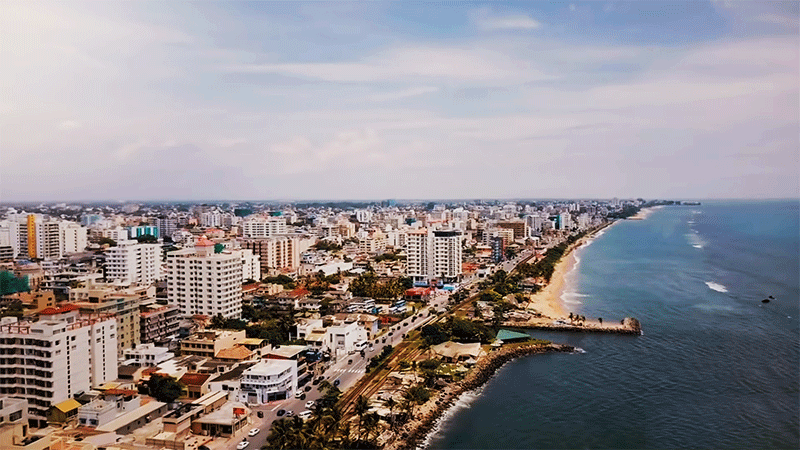
ABOUT SRI LANKA
Marco Polo considered Sri Lanka the finest island of its size in all the world. Tiny island Sri Lanka is located in the southern hemisphere, south of Indian mainland. What takes your fancy? Beaches? The coastal stretch south of Colombo offers palm-lined sandy expanses as far as the eye can see.
One can find enough ancient and inspiring architecture in the cities of Anuradhapura and Polonnaruwa during the holiday in Srilanka. Head for the Nuwara Eliya to escape the heat of the plains, where the coast fades away to reveal gorgeous rolling hills often carpeted with tea plantations. The entire island is teeming with birdlife and exotics like elephants and leopards are not uncommon.
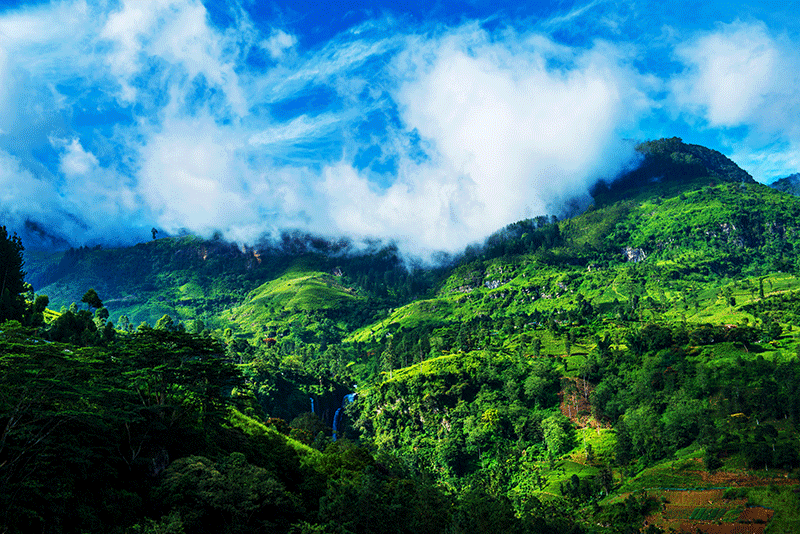
Sri Lanka in a holiday destination perspective
More than two million tourists travel to Sri Lanka, as sightseers, on business, as a student or due to health reasons. Most of the travellers arrive here as leisure travellers and book Sri Lank tour and beach holiday packages. Another considerable number of travellers book Ayurveda holiday packages in Sri Lanka and stay for several weeks in an Ayurveda hotel. Each of them has been seeking guidance, as others will if they are wise, on the scenic attractions and the strange customs to be encountered.
Nothing is more suited to the causes of international understanding and goodwill. But almost to an individual, visitors from abroad cannot help commenting on the lack of enterprise and the scant interest devoted to Sri Lanka’s attractions, apart from its sunshine and colourful scenic resources. There seems therefore little hope of holding the interest of tourists and visitors from abroad in large numbers, until health and pleasure-seekers nearer home help by popularizing these assets and putting them on the map.
‘Where to go in during the Sri Lanka road trip?’ or ‘What is there to see?’ are questions frequently asked by tourists. Naturally, much depends on one’s inclination and interests. However diversified or different these may be, it does seem possible to satisfy every one of them on this little island.
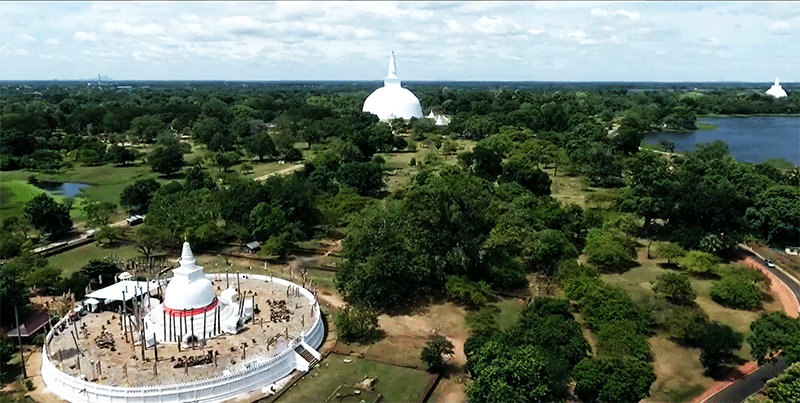
If it is cool air or rugged landscape that one is after, there are scores of resorts set in the south-central highlands, where hill piled upon a hill, and mountain range upon range, seemingly come to rest at the elevation of Nuwara Eliya.
Historical and archaeological associations can be satisfied by unlimited excursions to many less-frequented spots, even if the tourist centres Dambulla temple, Sigiriya rock, Polonnaruwa and Anuradhapura fail to offer allurement. And while the artist can still seek and find in the ruins of this old capital inspiration in craftsmanship which maybe even two thousand years old preserved in stone or paintings, those whose inclinations bend towards a study of old traditions may yet explore veritably isolated villages, where time has not yet destroyed the devotion to old memories deeply rooted in the souls of the people, and the respect for traditions, legends, and customs inherited from a distant past.
The marvellous heritage of Sri Lanka’s ancient civilization, the magnificent network of man-made lakes and irrigation channels which have combined life with culture, in the sun-scorched level plains, have a strong claim to administration, and cannot fail to satisfy. Or if it is the tang of the sea and surfing possibilities which attract, there are galaxies of coves and bays on the girdling coast-line hold out an irresistible appeal to the work-weary.
Nevertheless, more often than not it is the Sri Lanka jungles that appear to exert the greatest fascination. Nothing can be enjoyable, with work and worry left behind and an open road ahead, then the prospect of a holiday in regions which have been little explored and seldom visited, where one may take back pictures of wild denizens sporting or grazing in open unpopulated wastes, or bending over their reflection in the limpid surface of quiet jungle pools.
To reach such jungle solitude is necessarily fraught with a little more than the usual organization. In reality, a short Sri Lanka jungle trek is not quite so difficult nowadays as one might imagine. For those who afford it, the best way of seeing Sri Lanka is to travel by motor-car. The railway and the motor-bus contribute in some measures to bring many remote places of interest within the reach of the less fortunate, but much will depend on how one arranges the itinerary.
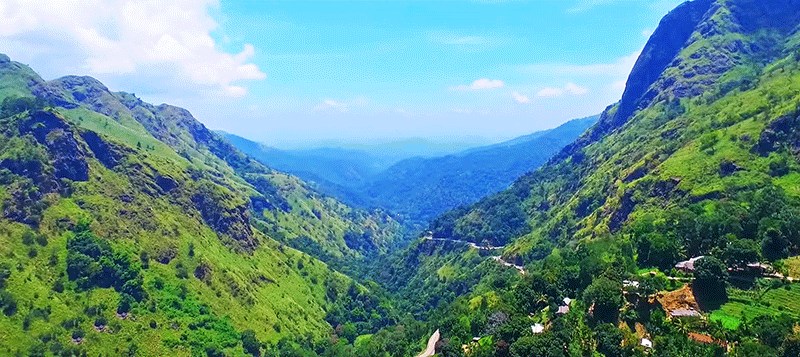
Demographic facts about Sri Lanka
Location: Sri Lanka is a tiny island in the Indian Ocean near the southernmost point of India. Situated north of the Equator between 5° – 10° North latitude and 79° – 82° eastern longitude.
Land area: This small island is 65610 square kilometres in extent.
Length: The maximum width of the country is 225km while it is 425 km from the northernmost point to the southernmost point of the island.
Relief: Depending on the elevation Sri Lanka is divided into two climate zones.
Drainage: Sri Lanka endowed with a large number of rivers and the longest river is called Mahaweli River, which is 333 km long. Due to the abundance of rivers, there is a large number of beautiful waterfalls in Sri Lanka. Bambarakanda is the highest waterfall with a height of 240 meters.
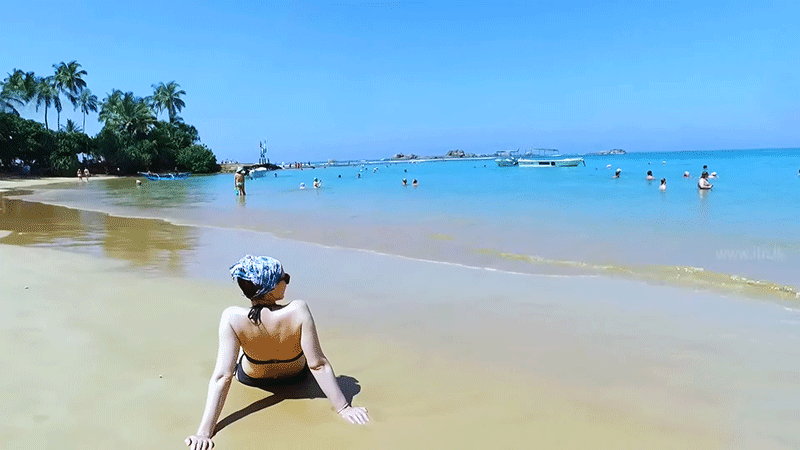
Understanding the geological nature of Sri Lanka
Let’s start the article by studying the geological characters of the island. Some people mistakenly assume that Sri Lanka is just a flatland like the Maldives because Sri Lanka is an island and small country.
However it is not true at all, about 50% of Sri Lanka is categorized under low-country (located below 500m from sea level), rest of the country is categorized under semi-mountain and mountain regions, where the altitude fluctuates between 500m to 2424m. The highest point of the island is Pidurutalagala, which is located 2524m above sea-level.
Facts about Sri Lanka weather
Warm and fine year-round, the average temperature in Colombo is around 27 C° and going down as the land rises to the hill country to as low as 0 C°. The island has two wet seasons from May to July South-West monsoon and from December to January North-East monsoon. Island’s climate has no off-season. Bright sunny warm days are the rule and are common even during the wet season. Sea temperature, as a rule, remains around 27 C°.
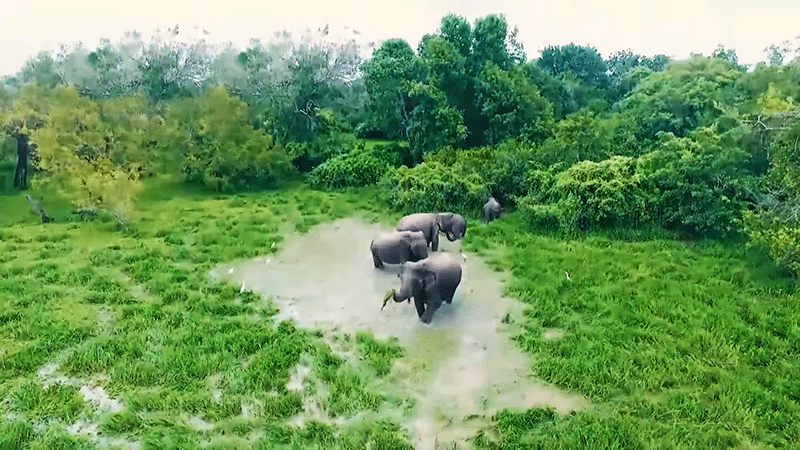
Facts about Sri Lanka Natural wealth
The natural wealth of the island is mainly consisting of tropical rainforests, beautiful beaches, fascinating wildlife, magnificent Rivers, mountains and escapements. The island has one of the highest Bio-diversities in the region and is ranked as one of the Bio-diversity hotspots in the world.
Island is the home for nine world heritage sites and two of them are natural forests reserves. Sinharaja Forest Reserve is declared as a world heritage site by UNESCO in 1988 while the Knuckles Forest in the Central mountains was also declared as a world heritage site in 2010. Sinharaja is the last remaining rain forest on the island with the highest biodiversity for a given forest within the island.
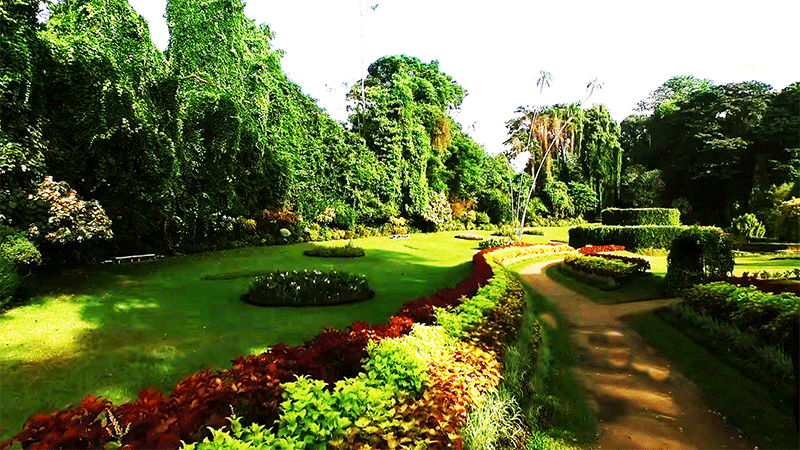
Facts about Sri Lanka Flora
The green colour can be recognized as the dominating colour of this island, due to its rich natural vegetation. There are a large number of rice fields, tea plantations, jungles, coconut plantations and grasslands; all these enhance the natural beauty of the country. The primaeval forest cover of the country estimated to be around 25% while the rest of the forests in the island is dating back to later periods. The vegetation is somewhat less green and thorn bush, savanna and cactus in the Deep South, north and some parts of eastern Sri Lanka, where the minimum rainfall of the island is recorded.
A large part of the wet zone is always covered with evergreen rain forests. They can be found in western and south-west parts of the country. Sinharaja, the biggest primaeval rain forest accommodate a large number of flora species including 100’s of tropical orchid species. Some of them such as Vesak orchid (Dendrobium macarthiae) are endemic to the island.
The central mountains of the island are dominated by tea while the low land is dominated by Coconut palms. National tree of the country ironwood tree (Mesua nagasurium) is another tree that is endemic to the country. The wood is dark red in colour and was often used for building bridges and temples in the past.
Today it is categorized as a protected tree and all form of usage is prohibited. Some of the other popular trees are Suriya Tree (Thespesia populnea), Kumbuk (Terminalia Arjuna), Muruta (Lagerstroemia spesiosa), tamarind tree (Tamarindus indica), Attana (Hertiera littoralis). A large number of mangrove species and flowering plants are also included in the list of the flora of the island.

Sri Lanka Fauna
Wild animals of the island are mainly confined to the national parks of the country which covers about 10% of the total land. The natural habitat of wild animals was alarmingly reduced in the 1800s and the rate of natural destruction is slowed after the British colonial rule. Elephant (Elephas maximus) is the largest land animal in the country and had a wide distribution including in mountains. Today they are only seen in the lowland forests while the species of elephant, which lived in the mountains, disappeared forever.
The elephant population in the country was in the downward trend during the British colonial period. But today again the population of the elephant is grown to recorded level and Sri Lanka has the maximum number of Wild elephants among the Asian countries.
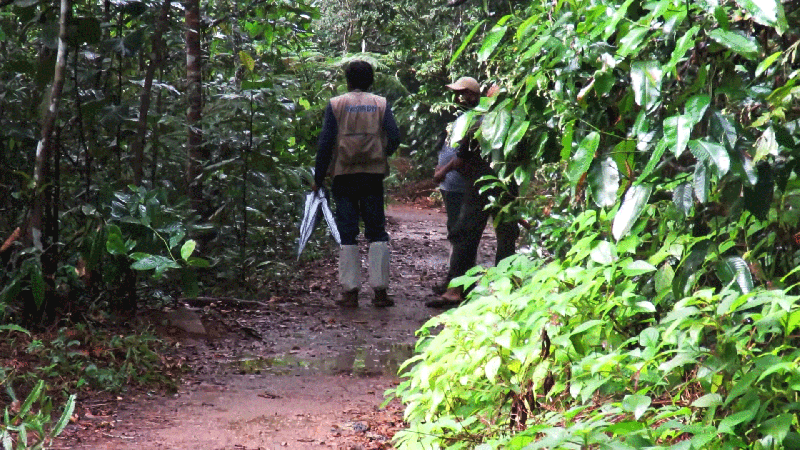
The best places to see wild elephants are Yala national park, Udawalawa, Gal Oya, Lahugala, Wilpattu. Yala national park is ranked among the best places to see leopards in the world. Other than the leopards and elephants are mostly seen animals in the jungles of Sri Lanka are the bear, Crocodile, Buffalo, jackal, wild boar, deer, and species of monkeys.
Sri Lanka’s jungle is inhabited by 95 species of snakes and only five species of them causing deaths among the people. Cobra, Vipers and Kraits are ranked among the most poisonous snakes and causing for thousands of deaths every year. About a dozen snakes considered being minder poisonous but not leads to death.
The island is very rich in the avian fauna species and there are 450 species birds in the country. The water resources such as tanks, rivers, lagoons attract a large number of foreign bird species during the northern hemisphere winter season. The water of Sri Lanka is inhabited by 54 species of fish species and most of them are only to be found in Sri Lanka.

Geography of Sri Lanka
Sri Lanka is divided into three climatic zones depending on the elevation from the Sea. Low land, Semi Mountains and Mountains each of these climate zones have different characteristics with regards to the Temperature, Humidity, Rainfall and vegetation.
A large part of the island is coming under the lowland, which is between 30 to 200 meters above the sea level. Ridges and valleys rise from the direction of South-West of the island and Mingle with the central mountains to form Central highland in the middle of the country. Formation of the mountains in the direction of the south-east is abrupt and central highland looks like a wall in the direction of South-West.
Sri Lanka is surrounded by the Indian Ocean and the coastal belt around the country is more than 1500 km long. The coast around the country is wide and sandy beaches and it is indented by lagoons on the coast. Being a tropical country Sri Lanka is under the influence of monsoon wind, depending on the monsoon rough sea is resulted in some parts of the island. From Nov to Apr is the South-West monsoon and the sea erosion can be seen in the South-West part of the country. North-East monsoon starts in Nov and ends in April. During this period the sea off North-east Sri Lanka is not suitable for Sea bath.
There are more than 100 rivers on the island and most of them are more than 100 km in length. Mahaweli River is the longest river (333 km) and it starts the journey from the sacred mountain (Sripada) of Sri Lanka and finishes its journey off the east coast port city of Trincomalee. Other than the Mmalwatu Oya all the rivers begin in the central mountains of the island.
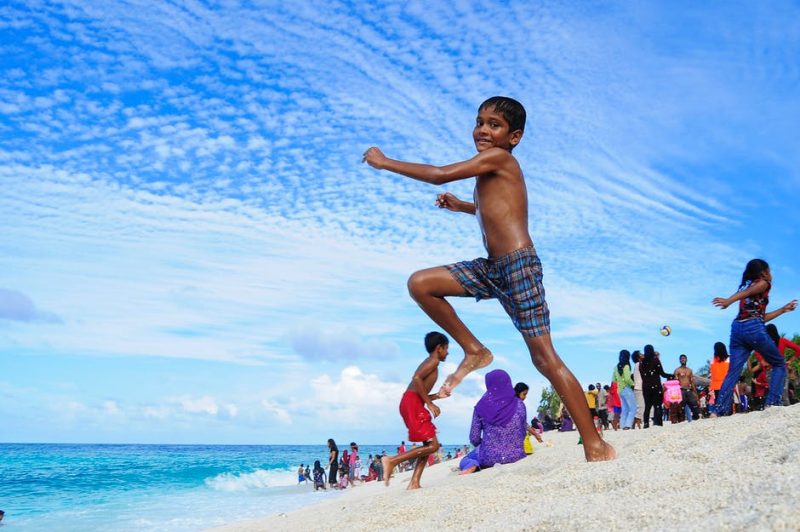
About Sri Lanka people
As per the latest statistics released in 2012, the population in the island exceeds 20 million marks. Even though Sri Lanka and India located to close to each other, there is a distinct difference between the cultures of two neighbours with some similarities. Initially, the Sri Lankan culture was hugely influenced by the Indian invasions and migrants from India.
Sri Lanka is a multi-ethnic and multi-cultural country with a number of ethnic groups living in harmony. The largest ethnic group in the country with 74% of share in the society is called Sinhalese. Origin of Sinhalese goes back to 6th century B.C. to the arrival of Sinhalese from north India. With the arrival of Sinhalese, Veddas (indigenous population) lost its dominance in the island. The second-largest ethnic group in the country is called Tamil and they are comprised of nearly 13% of the population.
Origin of Tamil goes back to 2nd century B.C, the arrival of south Indian invaders. But they were not considered as an important part of the country until 2nd, 3rd century A.D. 7% of the population in Sri Lanka are Muslims and the origin goes back to 8th century A.D. Arabian traders have laid the foundation of Muslims in the country. Rest of the population is consisting of other small ethnic groups such as Malays, Moors, Weddas, Burghers, Bohras.
Most of the Sinhalese believe in Buddhism making it the most popular religion in the country. Second most popular religion is Hindus and 15.5% of the believed to be in Hinduism. Majority of the Christians are Sinhalese, they were changed to Christianity during the colonial rule in Sri Lanka. The Muslim population in Sri Lanka considered being 7% while the rest of the population believes in other beliefs.
Languages of Sri Lanka
Sinhala, an Indo-European language, is the native tongue of the Sinhalese. Tamils and most Muslims speak Tamil, part of the South Indian Dravidian linguistic group. Use of English has declined since independence, but it continues to be spoken by many in the middle and upper-middle classes, particularly in Colombo. The government is seeking to reverse the decline in the use of English, mainly for economic but also for political reasons. Both Sinhala and Tamil are official languages.
Facts About Sri Lanka economy
Sri Lanka’s economy today is mainly based on the service and industrial sector; however, agriculture plays an important role as well. The major industries in Sri Lanka include rubber processing, telecommunications, textiles, cement, petroleum refining and the processing of agricultural products. Sri Lanka’s main agricultural exports include rice, sugarcane, tea, spices, grain, coconuts, beef and fish.
Tourism and the related services industries are also growing in Sri Lanka. At the moment Sri Lanka is experiencing a boom in the tourism industry. The number of holidaymakers in Sri Lanka is sharply increased for the last few years. The government of Sri Lanka is aiming to make it one of the most important income generators for the country and they have already launched an ambitious program to reach more than 2 million tourists by 2016.
The currency of Sri Lanka
The earliest used currency of Sri Lanka was known as Kahapana and it was called eldings in English, Puranas in Sanskrit. Kahapana was a coin with symbols one side of it or both side of the coin. According to the historical evidence they had been in use since the 3rd Century BC. The coins were made of metal and they were in varying shapes such as rounded, rectangle, square or oval. Most of the coins discovered were made of silver.
Currency unit that was known as Kahavanu was in circulation in the island from around 7 to 8 century AD.
The currency of Sri Lanka during the colonial rule
At the British government of Sri Lanka first retained the denomination of the Dutch monetary system, namely the rix-dollar divided into 12 fanams or 48 stuivers of 192 challies. The madras administration, however, kept its accounts, as in Madras, in star-pagodas, Madras fanams and ‘cash’, the start-pagoda being reckoned at 45 Ceylon Dutch Fanams, or 180 stuivers or three and a half rix-dollars.
The Dutch stuivers or ‘doodies’ current in the island were accepted by the British as currency and rated as 48 the rix-dollar, side by side with the English copper coins. Currency notes of 100, 50 and 25 rix-Dollars were issued in 1800. In 1802 the first coinage was made of 4,2, and 1 stuiver; in 1802, 1803 and 1804, coins of 1,1/2 and ¼ stuiver were also issued; in 1803 coins of 1 and ½ rix-dollar were struck.
In 1812 the rix-dollar was rated at is. 9d. or 11 3/7 to the pound sterling and a mint was established in the island. In 1815 copper coins of 2, 1 and ½ stuiver were coined. 37,339 rix-dollars worth of Dutch Challies were taken as a prize in Kandy and were put into circulation; in 1815 the Ceylon fanam was made equal to the Indian anna.
In 1823 the Madras rupee and quarter rupee were made current in Ceylon. But in 1825 the sterling currency of pounds, shilling and pence and halfpence and farthings were introduced and the silver rix-dollar was rated at one shilling and six-pence and was called in Sinhalese Patagaya or Ridi paha and in Tamil iraiyal; the copper fanam was rated at a penny half-penny, the Challies at a halfpenny. All notes expressed in rix-dollars were withdrawn, and all Ceylon copper coinage was demonetized from January 1831.
The currency of Sri Lanka during the British rule had been considerably changed after the independence of the island. The notes issued by the colonial rulers were used up to 1951 while the coins were used until 1963. The series of the new coin was introduced in 1963 and they were carrying the emblem of Ceylon. Today Sri Lanka rupee is the official currency of Sri Lanka and it is divided into hundred cents.
Our articles under the title “Places to visit in Sri Lanka“
- 10 Best Places To Visit In Sri Lanka For Honeymoon In 2021
- 15 Best places to visit in Sri Lanka in 3 days
- 7 Places To Visit In Sri Lanka South Coast Itinerary
- 22 places to visit in Sri Lanka in 5 days
- 12 best places to visit in Sri Lanka in 2 days
- 15 Places to Visit In Sri Lanka In Two Weeks
- 18 Best Places to Visit in Sri Lanka in 14 Days
- 10 Places To Visit In Sri Lanka Trip Itinerary
- Places To Visit In Sri Lanka In 6 Days
- Best places to visit in Sri Lanka off the beaten track
- Places to visit in sri Lanka within one day
- Places to visit in Sri Lanka in 4 days
- Places To Visit In Sri Lanka In 7 Days
- 10 Best Places to Visit in Sri Lanka Itinerary 8 Days
- What are the 20 Best Places to Visit in Sri Lanka in December?
- What are the 6 best places to visit on a 5-day trip to Sri Lanka?
- 7 PLACES TO VISIT ON SRI LANKA HERITAGE TOURS
- 10 Places To Visit In 9 Days In Sri Lanka Car Tours
- 8 Days In Sri Lanka And 15 Best Places To Visit
- SIGIRIYA ROCK FORTRESS SRI LANKA AND PLACES TO VISIT IN SIGIRIYA
- What are the top 11 places to visit in Mirissa Sri Lanka?
- 17 Best Places To Visit On Sri Lanka Hill Country Tours
- What are the 10 best places to visit on the Kandy tea plantation tour?

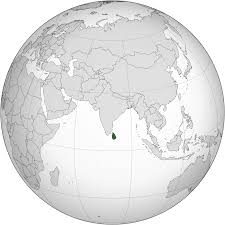





Very useful information about Sri Lanka. I knew little about Sri Lanka but I was able to gather lot more information about Sri Lanka on this beautiful article. Thank you.